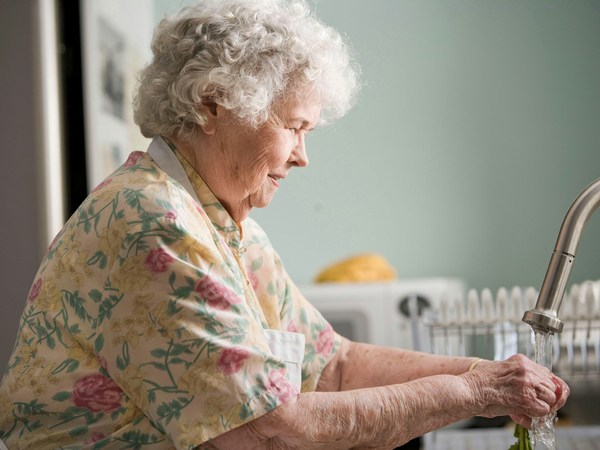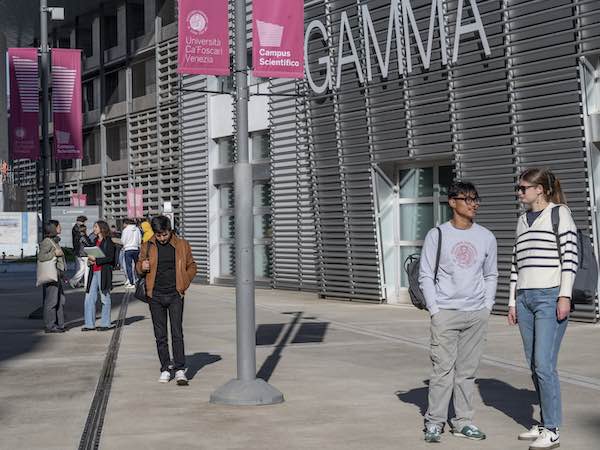In 2023 the European Union launched the 'Care Strategy,' calling on countries to achieve common goals for long-term care, which should be accessible, high-quality (and this includes working conditions), fair and sustainable.
Long-term care encompasses the support required by individuals who are unable to fully care for themselves over prolonged periods, including elderly people and those with chronic illnesses or disabilities. This care involves not only healthcare services but also a comprehensive network of support, such as assistance with personal care and daily tasks, as well as companionship and proximity.
During the COVID-19 pandemic, deficiencies and imbalances became particularly evident, both among and within EU countries. In the current scenario, the northern countries appear to be leading in quality due to strong public investments in care, which are in line with Europe's goals.
LeTs-Care is a comparative research project funded under the "Culture, Creativity and Inclusive Society" area of Horizon Europe. Launched on April 1, 2024, its objective is to identify and study effective and replicable solutions in the field of long-term care. The project is led by Ca' Foscari University of Venice, with seven participating partners from Italy, the Netherlands, Spain, Lithuania, Denmark, Portugal, Austria, and Belgium. The project team at Ca' Foscari consists of a group of sociologists including Barbara Da Roit, Maurizio Busacca, Francesco Iannuzzi e Pamela Pasian, who are experts in welfare, care practices, labour, and innovation processes.
Care strategy and social investment
The EU Care strategy is based on social investment policies developed in the late 1990s and early 2000s, following the model of northern countries. The main goal was to increase public investment, particularly in early childhood services, to make them affordable and of good quality. The underlying idea is to improve the social conditions of both service providers and users. The system becomes sustainable by promoting employment, especially among women, which in turn increases the socioeconomic well-being of families and government tax revenues.
But is this logic applicable "as is" to countries such as Italy, where the social, economic, and institutional context is different? We discussed this with Barbara Da Roit, professor of sociology and coordinator of LeTs-Care.
“The strategy has been most successful in the Nordic countries where it was least needed. In other countries, it has encountered structural and economic obstacles. Take Italy for example: it is a large and not very homogeneous country, with different levels of government (state, region, municipality) managing different services. Since the 2000s, early childhood services in Italy have grown, but mainly in the private sector. Due to limited public funding, these services are either expensive and accessible to few, or have lower costs because of poorly paid and poorly protected staff, resulting in low quality.
Much of European policy is based on the transmission of best practices. Under the Care strategy, for example, “integrated care” models are under scrutiny, combining formal and informal, social and health-related resources. However, the experience of social investment has taught us that one cannot but start from the existing situation, the available resources and capacities. In the Netherlands, for example, there are neighbourhood-teams across the professional divide, i.e. including nurses, care workers, and cleaners who also interact with the informal caregivers. These people work together to provide an integrated service. In Denmark, a system of social 'rehabilitation' is being experimented with to promote autonomy.
In the case of an elderly couple, if the person responsible for cooking passes away, a specific service is activated to provide meals to the surviving person and also teaches them how to cook. These services are often publicly funded. Currently, elderly care in our state relies heavily on private resources such as family members and caregivers (called "badanti”). There are also individuals within the health and social systems who play a complementary role. "Integration" policies and interventions in this context can mean different things. Although there are many integration experiments in Italy, they are struggling to become widespread, gain critical mass, and become well-established.
In Italy, 'badanti' are a pillar of long-term care. How does their profile fit into the European strategy?
“In Europe, Italy has the highest number of caregivers, known as 'badanti', with an estimated 800,000 to 1 million individuals. Their qualifications and standards would not be acceptable in countries where professionalized care is the norm. For instance, in the Netherlands, individuals without specific training, language proficiency, and proper supervision would not be permitted to offer caregiving services. This represents a fundamental difference in approach: in the Netherlands, home caregivers responsible for elderly individuals are expected to not only attend to their physical, health, and household needs, but also engage in activities such as making tea and having conversations.
Is there an estimate at the EU level of the number of people involved in care services or who would need them?
“It is challenging to determine the exact number of older people in need of long-term care, those receiving it, and those working in this sector, as well as those providing informal care. This difficulty stems from the lack of consistent definitions across countries (and sometimes within each country) and the challenges associated with collecting reliable data.
What we do know is that the phenomena studied by LeTs-Care have a major impact on the lives and work of millions of people in Italy and Europe. The following data is sourced from recent scientific literature and pertains to estimates for Italy.”
- Older people with care needs and care services
There are various methods to identify and assess the care needs of elderly individuals. One approach involves assessing their ability to perform essential daily activities such as eating, dressing, walking indoors, bathing, going to bed, and using the toilet. In Italy, it is estimated that nearly 20 per cent of individuals aged 65 and above face limitations in carrying out daily activities, which amounts to more than 2.5 million people. Among them, approximately 1.5 million encounter difficulties in performing at least 3 daily activities, indicating severe limitations. Furthermore, over 1 million individuals in Italy are believed to be affected by dementia, with 600,000 suffering from Alzheimer's, the majority of whom are elderly individuals. It's important to note that only a portion of these individuals are included in the total figure provided above.
Among older people with disabilities, women are overrepresented because difficulties and chronic diseases become more common as people age. In older age groups, the population is predominantly female, and women's health tends to be statistically worse than men's. Additionally, people with lower socioeconomic status are overrepresented, as they face higher risks of developing chronic diseases.
Less than 300,000 (2.2% of the 65+ population) elderly people live in a residential care facility (called RSA in Italy) and the like. This is a very low percentage compared to other European countries (in many countries, it reaches 6% of the population 65+ after a period of bed number cuts...). Even in the Italian regions with the largest funding, the percentage does not exceed 3%; in Veneto and Lombardy, for example, it is 2.8%; the only exception is the Province of Trento, where it is close to 4%. This means that, overall, in Italy, more than two million people with moderate to severe care needs live at home. Home support services for people in need of long-term care are not widespread nor reliably consistent.
- Care as a profession
The care services sector, including residential and home-based care, is not very developed, resulting in a relatively small estimated number of people working in this field. However, the estimated number of care workers is close to 400,000, with the majority being women (Brugiavini et al., 2023). Working conditions in this sector are often problematic, leading to high turnover rates, staff shortages, and risks to physical and psychological health, such as burnout. In addition to formally employed care workers, there are also the "family caregivers" or "badanti" mentioned above.
- Informal caregivers
In Italy, between 15 and 20 percent of people aged 50 or older provide informal care, with a higher number of elderly people informal caregivers found in this age group (Tur-Sinai et al., 2020). This means there are roughly 4-5 million people providing informal care. With more women participating in the labour market and having longer working careers, an increasing number of people are juggling caregiving duties for elderly parents alongside paid work and other family responsibilities.
But if the 'best practice' logic does not work, and the European model cannot be transferred to countries with different structures and approaches (such as Italy), how can we achieve the results required by the EU?
“For a real ‘Care strategy’, we need to develop new integrated care models that are applicable on a large scale and employ new business models and new technologies. The first step should be to consider the contexts in different countries, their needs and solutions, and understand how obstacles are overcome. Then we should analyse virtuous examples in an integrated way, bringing together needs, solutions, tensions and contexts. Studying other countries' models does not mean exporting their practices ‘as is' but understanding what choices are available, what tensions need to be resolved, and what needs to be changed in every context. This is the only way towards developing practices that are perhaps not 'best' but rather reasonable and sensible for their context. Research can help analyse trade-offs and explore alternative options by providing results to decision-makers and stakeholders.”










